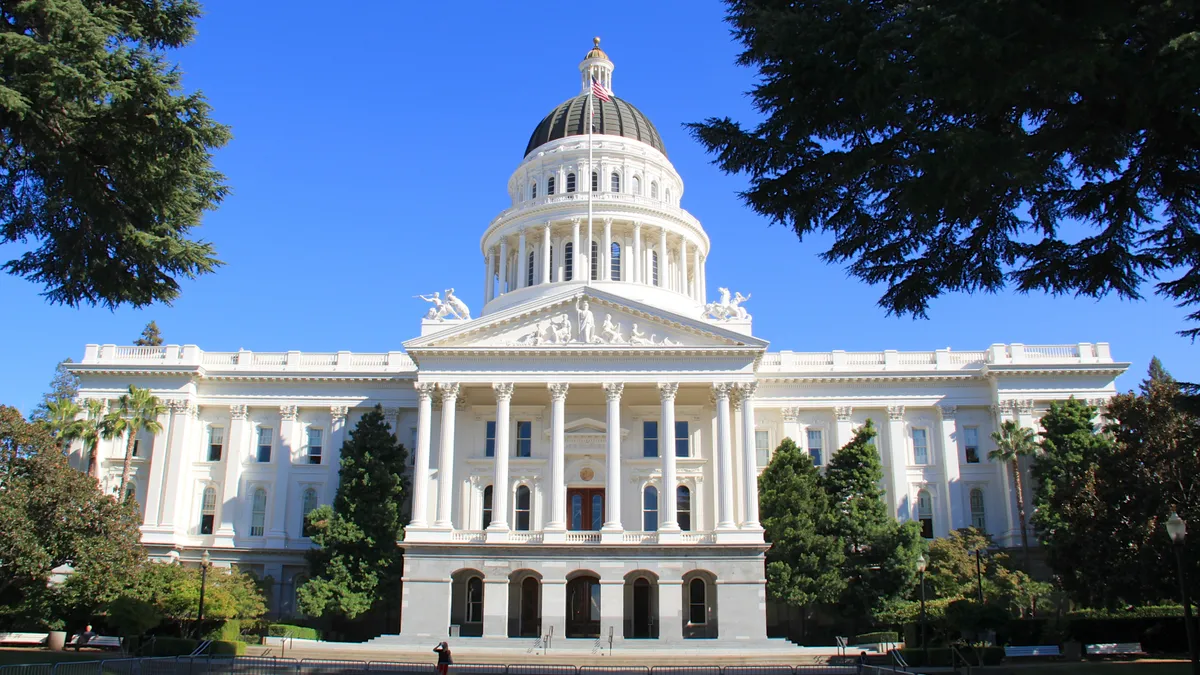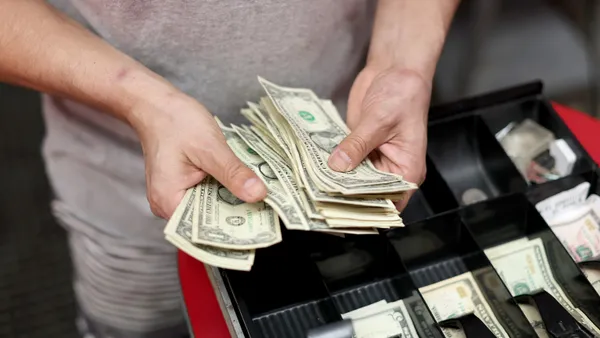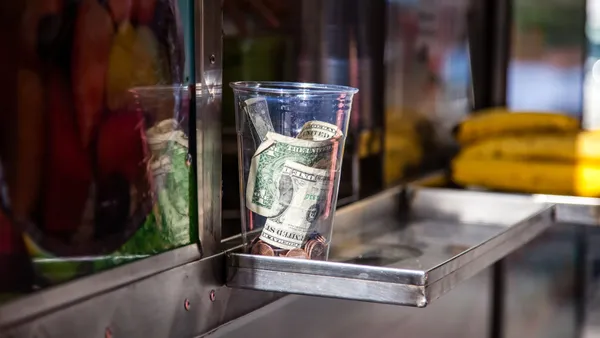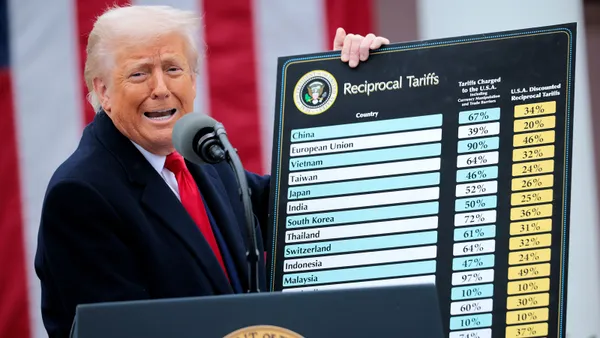Dive Brief:
- California Gov. Gavin Newsom issued an executive order on April 16 that requires restaurants with more than 500 employees, regardless of how many employees work in the state, to provide paid coronavirus sick leave. The executive order also applies to workers at grocery stores, food warehouses, and to grocery and restaurant delivery personnel. The order will stay in place for the duration of California's statewide stay-at-home order.
- In order to qualify for COVID-19 Supplemental Paid Sick Leave, employees must be unable to work either because they are subject to a federal, state or local quarantine order related to COVID-19; the employee is advised by a healthcare professional to self-isolate due to COVID-19 concerns; or if a restaurant prohibits the employee from working due to COVID-19 related health concerns. The employee must make a verbal or written request to their employer to receive the benefit.
- Full-time employees who work or were scheduled to work 40 hours per week in the two weeks before leave is taken will receive up to 80 hours of sick pay. Part-time employees are entitled to the number of hours they work over a two-week period. Part-time employees with variable schedules will receive up to 14 times the average number of hours worked each day for their employer in the prior six months. Food workers are entitled to the highest rate between their regular pay for the last pay period, California minimum wage or local minimum wage, but employers are not required to pay more than $511 per day and $5,110 in the aggregate paid sick leave.
Dive Insight:
California's executive order does not apply to restaurants that already provide equivalent paid sick leave to their employees, excluding a growing number of major restaurant chains.
Pressure from employees and industry critics has pushed Domino's, Chipotle, KFC, Shake Shack, McDonald's, Starbucks and many other industry giants to issue COVID-19 emergency paid sick leave. For the legacy brands that didn't previously offer paid sick leave — a rare benefit in the restaurant space before the novel coronavirus pandemic took hold in the U.S. — the move makes sense. Paid sick leave could convince frontline workers to stay at their posts during this tumultuous time and protects their brand reputations as well, which could lure workers furloughed in other sectors to apply.
While major chains have deep enough pockets to shell out for these benefits, however, many independent restaurants don't. Razor-thin margins have kept small eateries from offering paid sick leave in the past, and to do so now when sales are down amid dining room restrictions could shutter an independent restaurant. California's new requirement only applies to the major players, so while this could help normalize sick leave benefits and nudge big brands to keep them even after the coronavirus pandemic ebbs, it seems unlikely it could trickle down to smaller businesses.
Still, major chains impacted by California's mandate could use this as an opportunity to see if their concerns over paid sick leave's impact on revenue are overblown. Starbucks and Sweetgreen, for example, were offering paid sick leave long before the outbreak, and Darden Restaurants recently made it a permanent benefit for its workers.
"I think this could very well be the start of a trend," Kyle Winnick, a labor and employment attorney at Chamberlain Hrdlicka, told Restaurant Dive in a recent interview. "From an employment law perspective, having a sound paid time off or sick leave policy just makes good sense regardless of the threat posed by COVID-19."
California also launched a program Friday in partnership with the Federal Emergency Management Agency that pays restaurants for giving seniors three nutritious free meals a day, which could serve as a blueprint for other states looking to bolster their restaurant markets.














